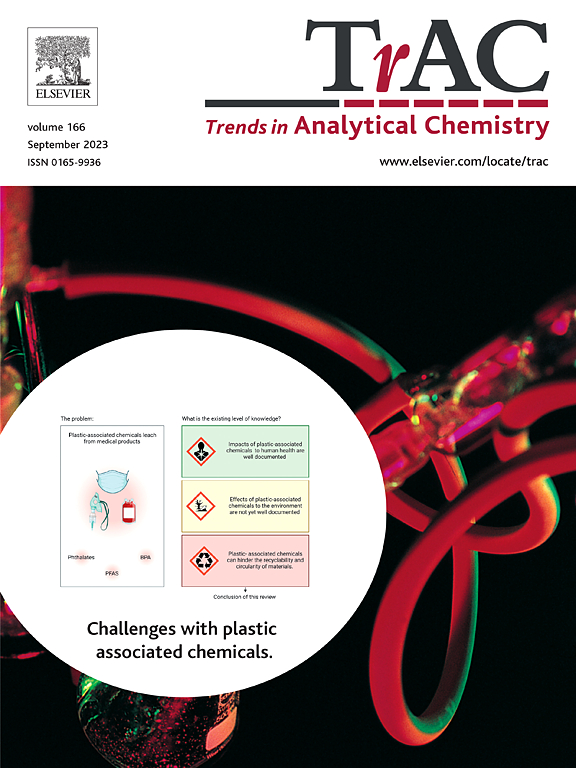Advances on constructing functional reticular materials for efficient determination of radionuclides
IF 12
1区 化学
Q1 CHEMISTRY, ANALYTICAL
引用次数: 0
Abstract
The accurate and rapid determination of radionuclides has become an imperative requirement in environmental monitoring and nuclear safety management, driven by their chemical and radiotoxic threats to ecosystems. Luminescent reticular materials have emerged as promising sensing platforms owing to their ordered porous architectures and precisely tailorable host-guest interaction dynamics. Nevertheless, unmodified reticular frameworks frequently suffer from insufficient recognition specificity toward target radionuclides, resulting in compromised detection sensitivity and selectivity. To address these limitations, intensive research efforts have been dedicated to engineering functionalized reticular systems through rational design principles. This review systematically examines cutting-edge strategies for constructing high-performance luminescent materials, commencing with an analysis of radionuclide contamination mechanisms and the fundamental advantages of reticular scaffolds in photoluminescent sensing applications. Subsequently, we critically evaluate three predominant functionalization methodologies of ligand tailoring, post-synthetic modification and blending method. Throughout the discussion, we emphasize the structure-performance correlations in achieving selective recognition and environmental stability enhancement.

构建高效测定放射性核素的功能网状材料的研究进展
由于放射性核素对生态系统的化学和放射性毒性威胁,准确和快速测定放射性核素已成为环境监测和核安全管理的迫切要求。发光网状材料由于其有序的多孔结构和精确定制的主客相互作用动力学而成为有前途的传感平台。然而,未经修饰的网状框架往往对目标放射性核素的识别特异性不足,导致检测灵敏度和选择性受损。为了解决这些限制,密集的研究工作一直致力于通过合理的设计原则工程功能化网状系统。本文系统地探讨了构建高性能发光材料的前沿策略,从分析放射性核素污染机制和网状支架在光致发光传感应用中的基本优势开始。随后,我们批判性地评估了三种主要的功能化方法:配体剪裁、合成后修饰和混合方法。在整个讨论中,我们强调在实现选择性识别和环境稳定性增强中的结构-性能相关性。
本文章由计算机程序翻译,如有差异,请以英文原文为准。
求助全文
约1分钟内获得全文
求助全文
来源期刊

Trends in Analytical Chemistry
化学-分析化学
CiteScore
20.00
自引率
4.60%
发文量
257
审稿时长
3.4 months
期刊介绍:
TrAC publishes succinct and critical overviews of recent advancements in analytical chemistry, designed to assist analytical chemists and other users of analytical techniques. These reviews offer excellent, up-to-date, and timely coverage of various topics within analytical chemistry. Encompassing areas such as analytical instrumentation, biomedical analysis, biomolecular analysis, biosensors, chemical analysis, chemometrics, clinical chemistry, drug discovery, environmental analysis and monitoring, food analysis, forensic science, laboratory automation, materials science, metabolomics, pesticide-residue analysis, pharmaceutical analysis, proteomics, surface science, and water analysis and monitoring, these critical reviews provide comprehensive insights for practitioners in the field.
 求助内容:
求助内容: 应助结果提醒方式:
应助结果提醒方式:


